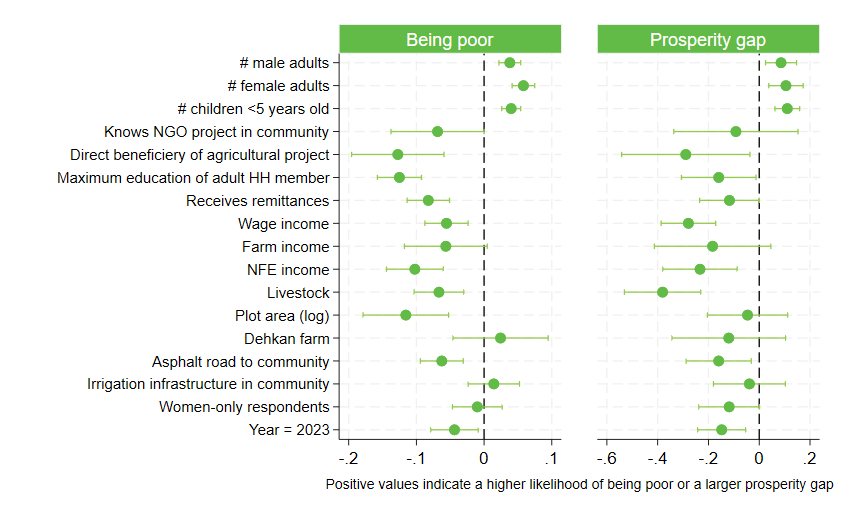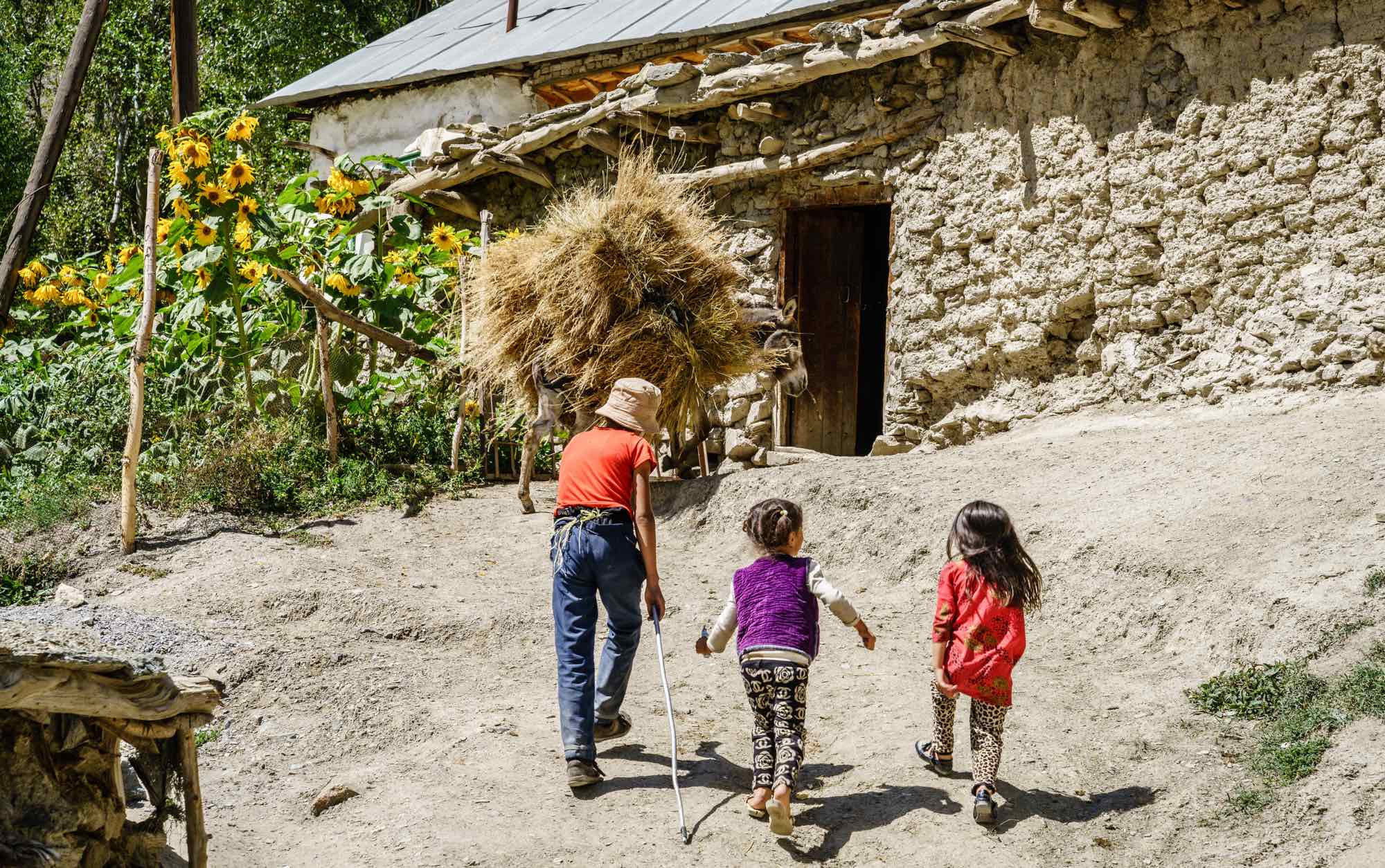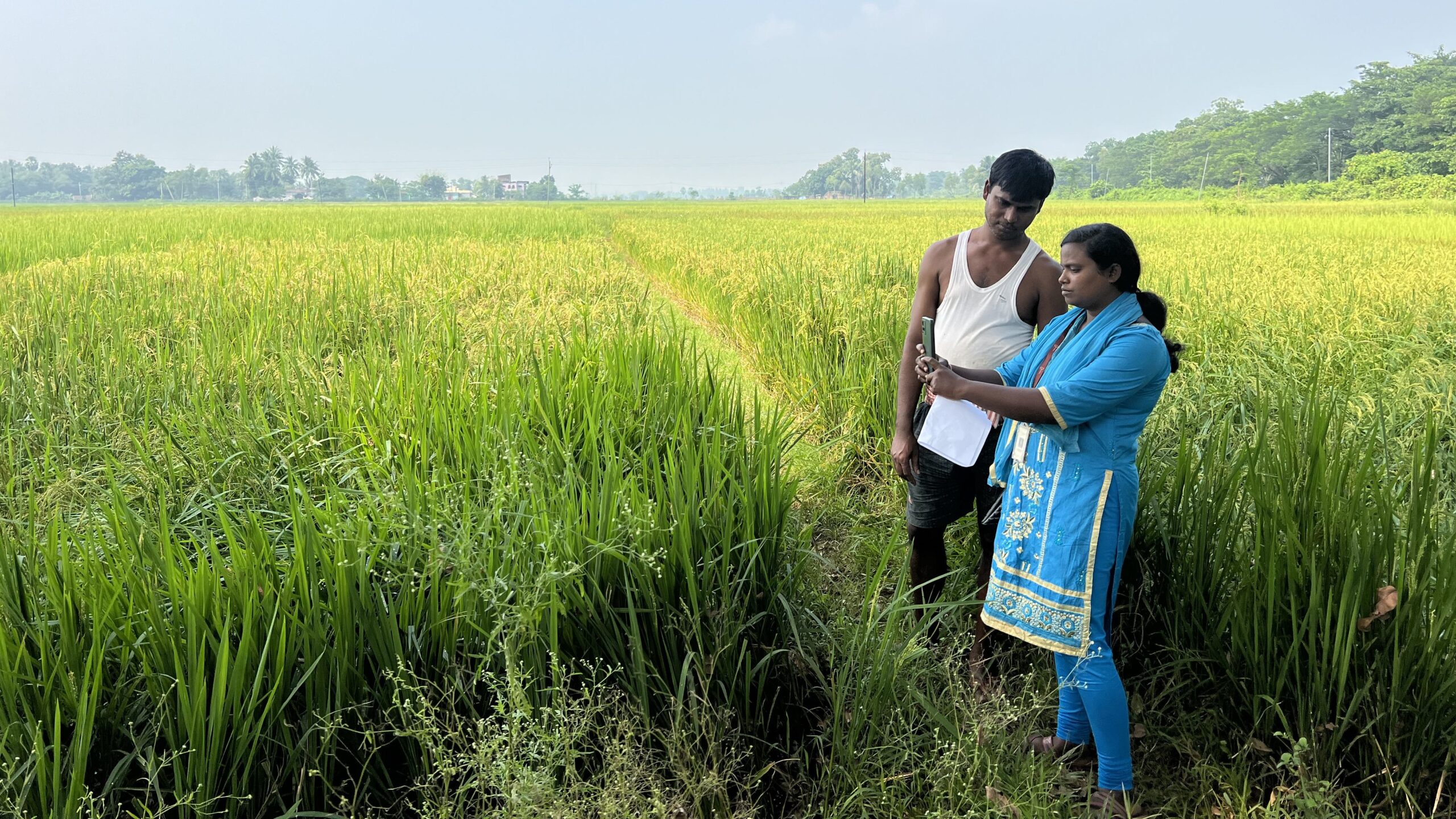Tajikistan, the poorest country in Central Asia, is making significant efforts to spur economic growth and improve the well-being of its people. The national economic strategy aims to increase domestic incomes by 2 to 3.5 times between 2016 and 2030 and includes a number of structural reforms and targeted development programs; the country moved from low income to lower-middle income status in 2021.
Many of these economic development efforts have focused on the Khatlon Region, a predominantly rural area in Tajikistan’s southwest. How has the welfare of the people of Khatlon changed over the past decade with respect to infrastructure and living conditions, food security and dietary intake, and poverty? Which factors are associated with changes in poverty?
To answer these questions, we oversaw an in-person interview survey of 2,000 households located in 12 Khatlon Region districts—the U.S. Agency for International Development (USAID) Zone of Influence—in February-March 2023. Most of the respondents had also been interviewed in the same time frame in 2015, offering a good opportunity for direct comparisons across the two time periods. In that period of the year, towards the end of winter, food insecurity and dietary quality are typically at their worst. The findings from this study were published in our recent Working Paper.
Changes from 2015 to 2023
From 2015 to 2023, survey results show several notable improvements: Average consumption expenditures increased by about 10% and poverty fell by roughly 10%. Almost no households had access to improved sanitation in 2015, but nearly half of households did in 2023. Water infrastructure and asphalted roads connect more villages in 2023 than before. Residents’ satisfaction regarding the quality of education and health facilities in their communities has risen.
Food security and diets also improved. Compared to 2015, fewer households reported having had no food at all in the home in the past month in 2023 (40% in 2015 vs. 27% in 2023), and overall, more than one out of ten (12%) households improved their hunger status from 2015 to 2023. Moreover, some improvements in dietary patterns were observed at the household level (though not at the individual level), including an increase in the number of households consuming eggs, fruits, and seeds in the previous week.
Despite these improvements, several areas of concern remain.
Low dietary quality—reflected in inadequate dietary diversity––is evident, particularly among women: Only one out of three women achieved minimum dietary diversity, indicating a majority of women may not be consuming enough micronutrients. Fewer women consumed meat, chicken, and fish than men did in the previous day (45% compared to 50%)—a difference seen even among women and men living in the same household.
Relatedly, individual dietary diversity did not significantly improve since 2015. Food consumption shifted to more expensive items (e.g., meat, chicken, and fish, instead of pulses and eggs) but not to more diversified and therefore more healthy diets. Fewer household members consumed pulses and vegetables (including vitamin-A-rich vegetables), while more reported consuming food away from home in 2023 than in 2015.
While poverty fell overall, survey estimates also show its persistence: More than a quarter of households are poor, and 14% of the population was “newly poor” in 2023, i.e., had fallen into poverty since 2015.
Prosperity, rather than merely escaping poverty, remains far out of reach for most of the Khatlon population. Thus, we also considered what would be needed to lift everyone to at least the poverty line for upper middle-income countries ($6.85 per capita per day in 2017 PPP equivalents). For the population to reach this minimum prosperity level, average incomes would need to double.
Factors associated with poverty
What are some reasons why poverty persists? Households with more members (especially more female adults), fewer livelihood sources, and those located in more remote locations had lower consumption expenditures, were more likely to be poor, and were further from being prosperous (Figure 1). The positive association between the number of female adults in the household and poverty-related indicators may be explained by the restrictive social norms surrounding women’s employment that limit their opportunities to work outside the home and create household income.
Figure 1: Household factors associated with poverty

Source: Lambrecht et al, 2023
In contrast, households were less likely to be poor if an adult household member attained a higher level of education and the household had any income-generating activity (either on an own farm or any off-farm employment), larger land area, and was connected with an asphalt road. Notably, households that participated in agriculture development activities in the past three years (e.g., received direct support or participated in trainings) were 13% more likely to move out of poverty, showing higher expenditures, lower likelihoods of being poor, and a smaller gap to being prosperous than other households.
Looking ahead
The Khatlon Region’s substantial decline in poverty in the past eight years offers encouraging prospects for potential further welfare improvements going forward. However, many people remain at risk of being left behind; further progress is needed to eradicate poverty and to move towards prosperity for all. Many households fluctuate in and out of poverty—putting them at a significant risk giving up any gains and falling back into poverty in the event of shocks or adversity.
In addition, gender disparities in both dietary quality and poverty status remain, pointing to the need for further exploration of gender-responsive solutions to improve welfare for all. The role of research will be critical—not only in monitoring progress, but in shaping development efforts to be truly impactful, equitable, and sustainable.
Isabel Lambrecht is a Research Fellow with IFPRI’s Development Strategies and Governance (DSG) Unit based in Dushanbe, Tajikistan; Sarah Pechtl is an IFPRI Non-Staff Fellow and Mickey Leland International Hunger Fellow based in Dushanabe; Mohru Mardonova is a DSG Research Assistant based in Dushanbe; Kamiljon Akramov is a DSG Senior Research Fellow. This post is based on research that is not yet peer-reviewed.
Referenced Working Paper:
Lambrecht, Isabel; Mardonova, Mohru; and Akramov, Kamiljon T. 2023. Welfare and vulnerability in Tajikistan: Evidence from twelve districts in Khatlon Province, 2015 – 2023. Central Asia Working Paper September 2023. Washington, DC: International Food Policy Research Institute (IFPRI). https://doi.org/10.2499/p15738coll2.136910
Funding for this work was provided by the United States Agency for International Development (USAID)
through the Tajikistan Evaluation and Analysis Activity.







